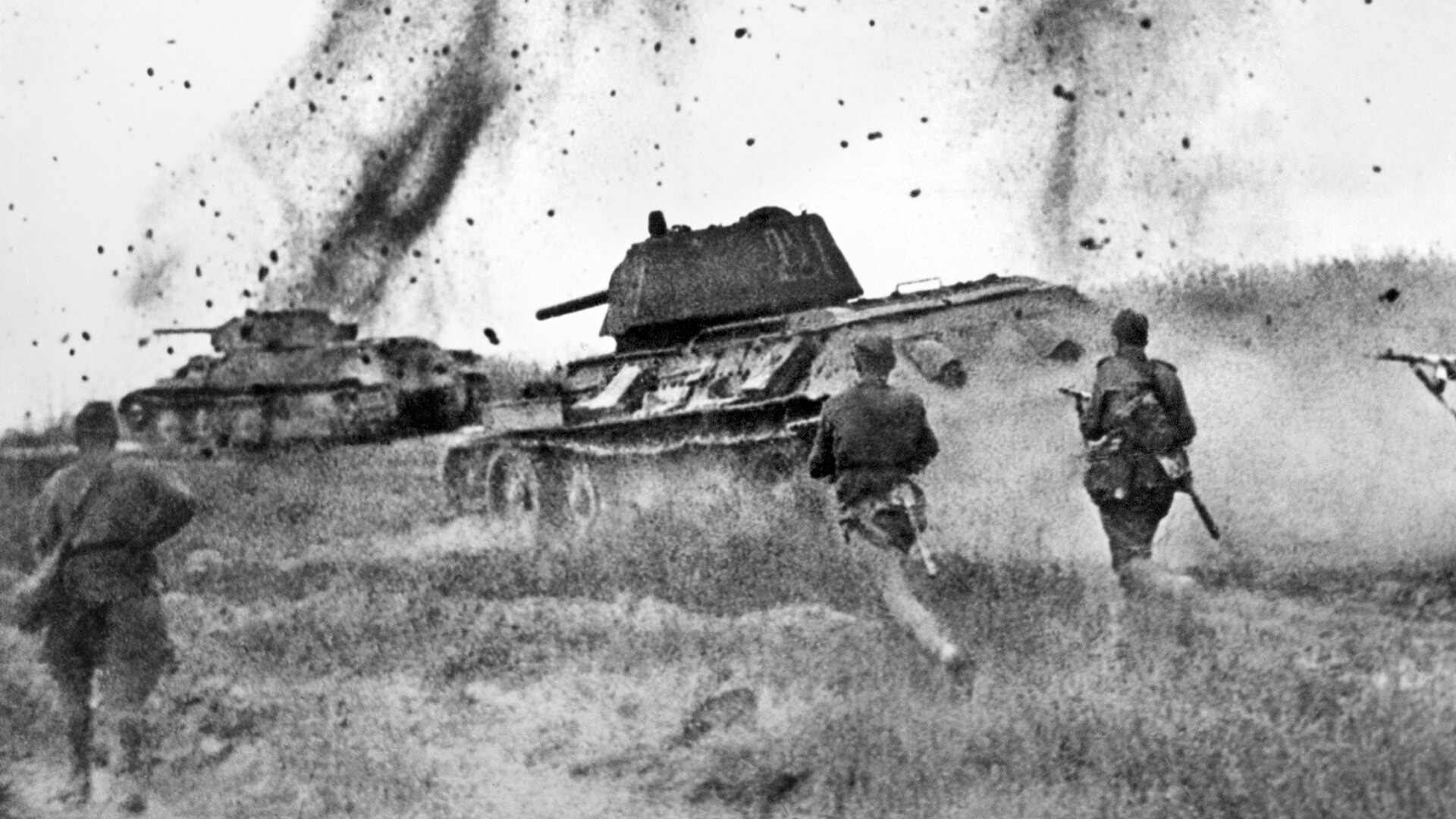
Attack of the units of the 5th Tank Army near Prokhorovka.
Ivan Shagin/SputnikOn July 5, 1943, one of the most important battles in the history of World War II began near Kursk. In it, it was decided if Germany could regain the strategic initiative in its brutal struggle against the Soviet Union, which it lost after the Stalingrad fiasco.
The encirclement of the 6th Army of Friedrich Paulus in the city on the Volga and the ensuing defeats of the Wehrmacht and its Romanian, Hungarian and Italian allies on the Don, literally brought down the German front.. Under the mounting pressure of the Soviet forces the Nazis retreated hundreds of kilometers to the West.
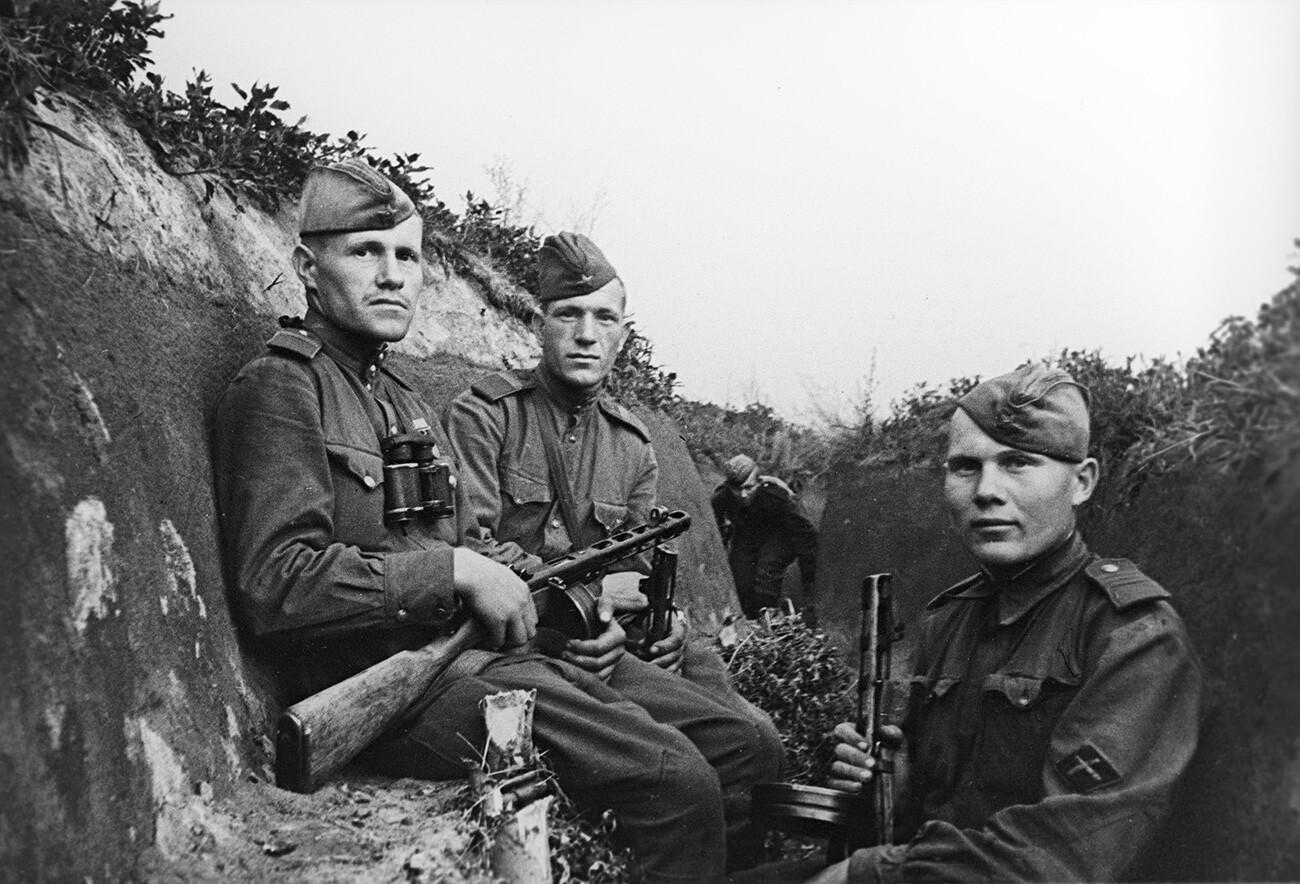
Soviet soldiers before the Battle of Kursk.
Fyodor Levshin/SputnikOnly by Spring 1943 did the Germans manage to stabilize the front and even retake the cities of Kharkov and Belgorod that they had ceded prior. As a result of the hostilities, a giant bulge formed that went deep into the disposition of the German army. Soon, it would become known globally as the ‘Kursk Bulge’.
The concentrated Soviet troops there threatened the flanks and the rear of the German Army Group Center and Army Group South. In turn, in the case of favorable developments, the Germans could also, by converging flank strikes, “cut off” the bulge and catch a large portion of the Red Army forces in a trap.

German Marder III tank destroyers on the way.
BundesarchivThis is precisely what the offensive ‘Operation Citadel’, designed by the high command of the German Armed Forces, focused on. In the order on April 15, 1943, the command noted: “This offensive has been accorded the highest priority. It has to end in a swift and decisive success… The best regiments should be used in the main strikes, the best weaponry, the best commanders and a large amount of ammunition. A victory at Kursk must become a signal for the entire world.”
In total, the German strike force amassed more than 900,000 men, about 10,000 guns and mortars, up to 2,700 tanks and assault guns and about 2000 aircraft. This amounted to about 70 percent of tank divisions, up to 30 percent of motorized divisions, more than 20 percent of infantry divisions, as well as more than 65 percent of all combat aircraft that participated in the war against the USSR.
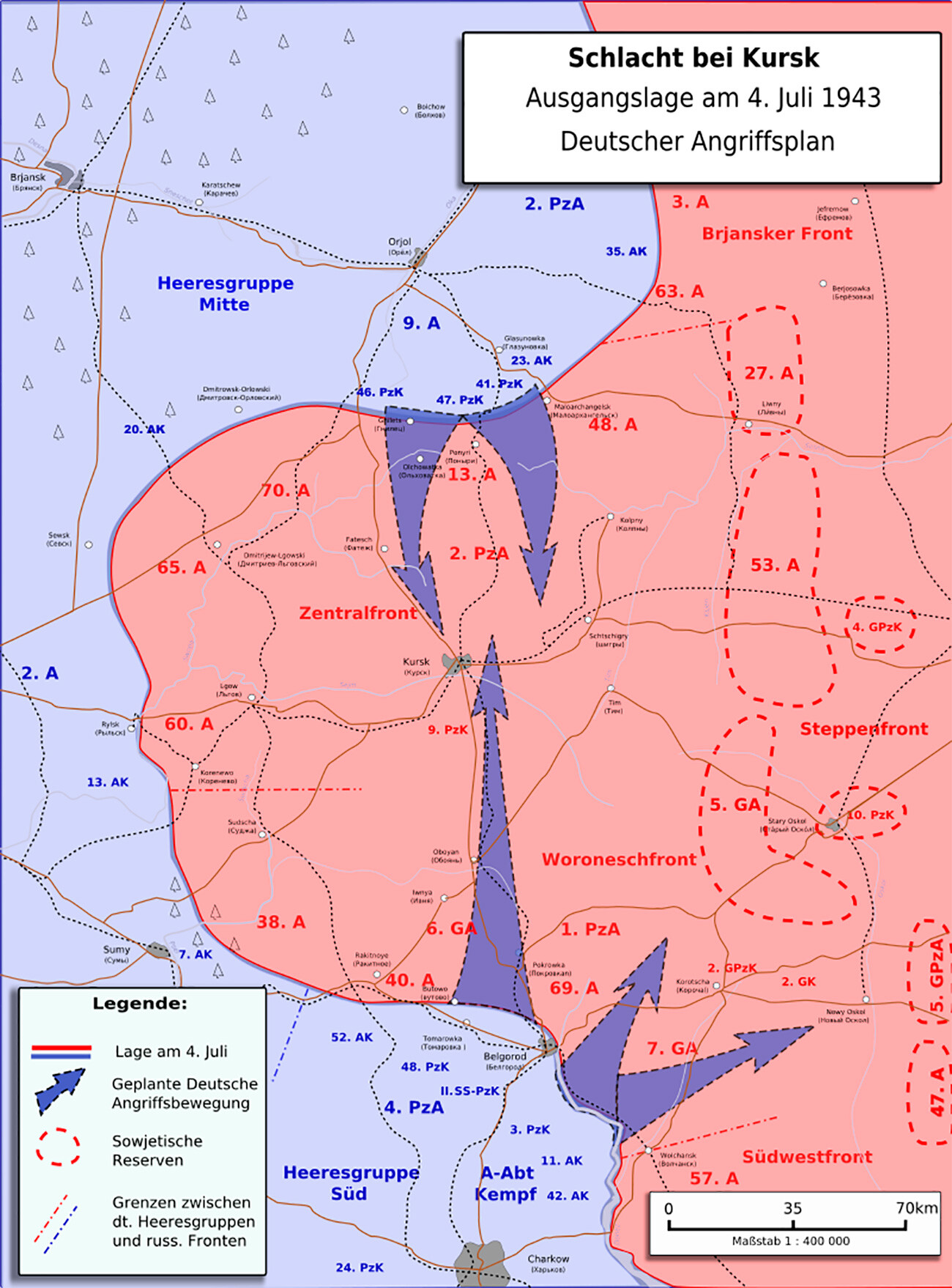
The Red Army didn’t sit idly. By the beginning of the large-scale battle in the region of the bulge, it had concentrated 1,3 million soldiers (with 600,000 more in reserves), more than 26,500 guns and mortars, more than 4,900 tanks and self-propelled artillery units and about 2,900 aircraft.
Having achieved a number advantage over the enemy in all respects, the Soviet military command, nonetheless, decided to act defensively. In the report to Stalin from April 8, Marshal Georgy Zhukov informed: “I consider the transition of our troops to the offensive in the coming days with the goal to pre-empt our enemy [to be] inexpedient. It would be better if we exhaust our enemy with our defenses, destroy their tanks and then, introducing fresh reserves, transition to a general offensive and finish off the main group of the enemy’s forces…”
The Soviet forces built powerful defenses on the Kursk Bulge, which included eight defensive lines and frontiers with a total depth of 250-300 kilometers. The troops, preparing to repel the enemy’s offensive, were en masse supplied with artillery. For example, in the defensive line of the 13th army more than 90 guns and mortars were concentrated per one kilometer of the front line – not a single defensive operation prior had such artillery density.
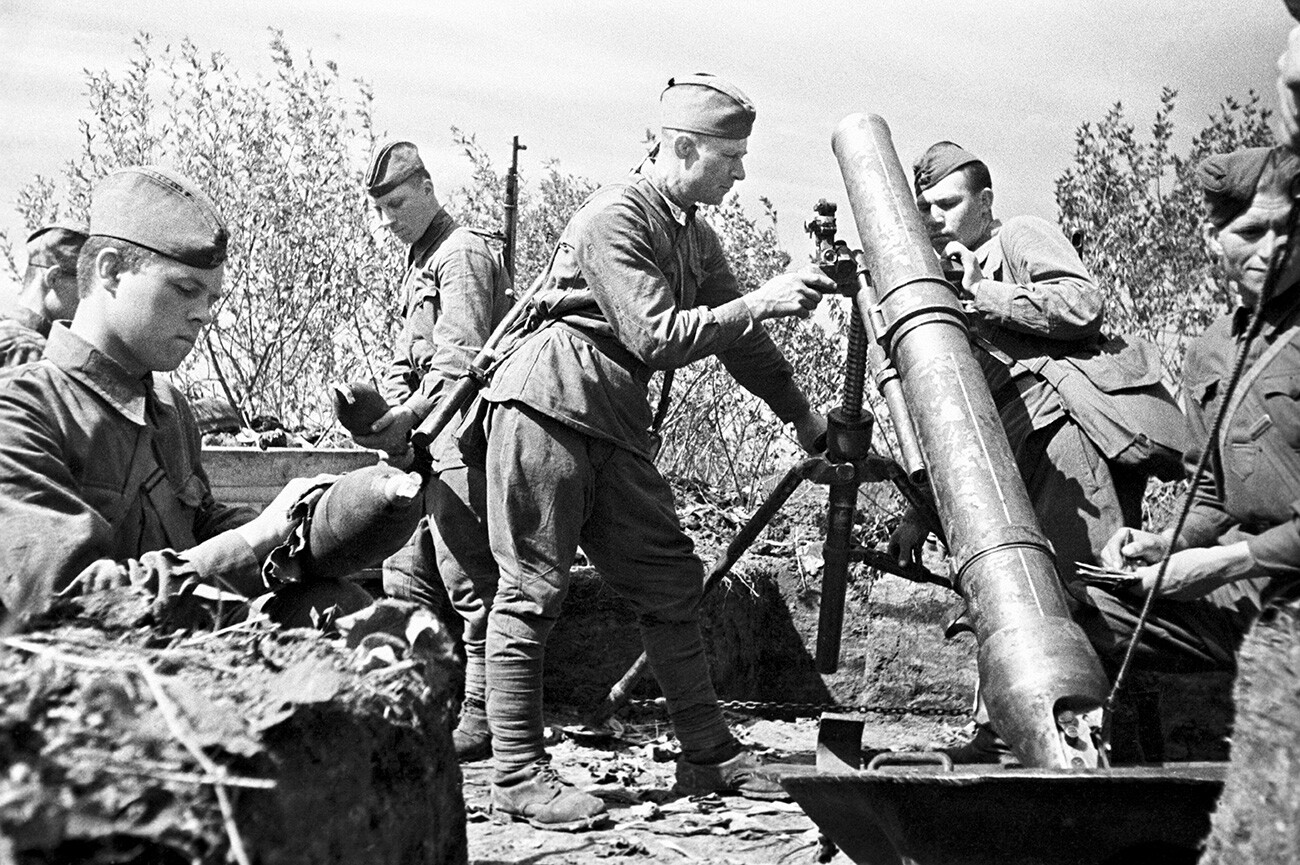
Soviet mortar crew during combat.
Fyodor Levshin/SputnikThe success of the German advance in many respects depended on the surprise factor of the first strike. However, Soviet intelligence managed to retrieve the date of the beginning of the operation, and in the early morning of July 5, right before the beginning of ‘Operation Citadel’, Soviet artillery delivered a preventive mass strike on the enemy positions.
“The German Fascist regiments were caught off-guard,” Marshal Konstantin Rokossovsky remembered, who back then was the commander of the Central Front. “The enemy decided that the Soviet side itself had launched an offensive. This, naturally, threw a wrench in their works, sowing confusion among the German soldiers. The enemy required about two hours to put their forces back in order.”
After that, two groups of German forces went on a general offensive on the northern and southern face of the Kursk Bulge. They intended to break through the Soviet defenses and reunite near Kursk, as such creating a large “sack” for the Red Army.
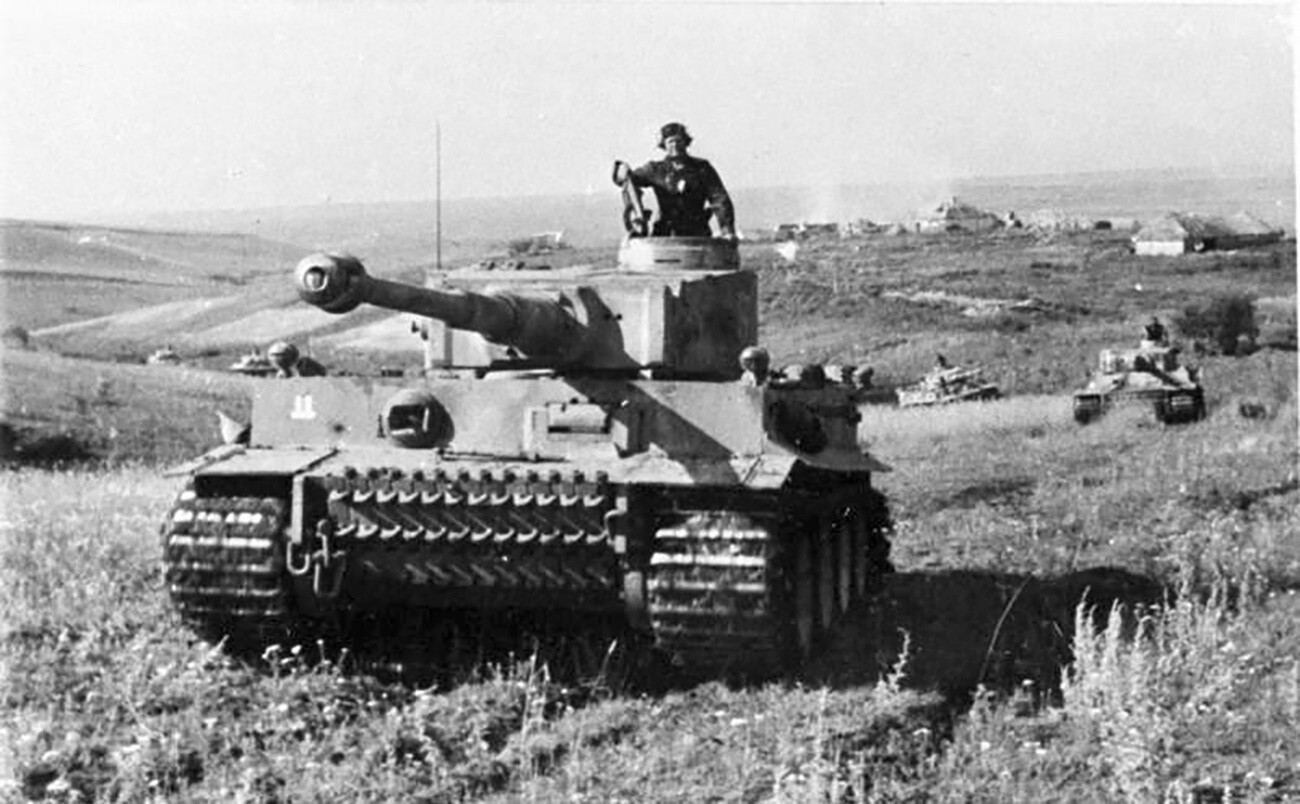
German Panzer VI “Tiger” tanks during the Battle of Kursk.
Bundesarchiv“Attacked by a steel avalanche, our troops fought selflessly, using all possible means to strike down the enemy,” Rokossovsky wrote. “Forty-five-millimeter guns were also used against tanks. They couldn’t penetrate the armor of the ‘Tigers’. So, they shot from a short distance, aiming at their tracks. Sappers and infantrymen closed in on the stopped enemy machines under a hurricane of fire and placed mines under them, showered them in grenades and incendiary bottles. At the same time, rifle units separated the enemy infantry, which was following the tanks, with their fire and eliminated them with counterattacks.”
Having met the stubborn resistance of the Soviet troops at the northern face, the Germans managed to go only 6-8 kilometers deeper. By July 12, the enemy had exhausted its offensive potential in full and transitioned to defense.
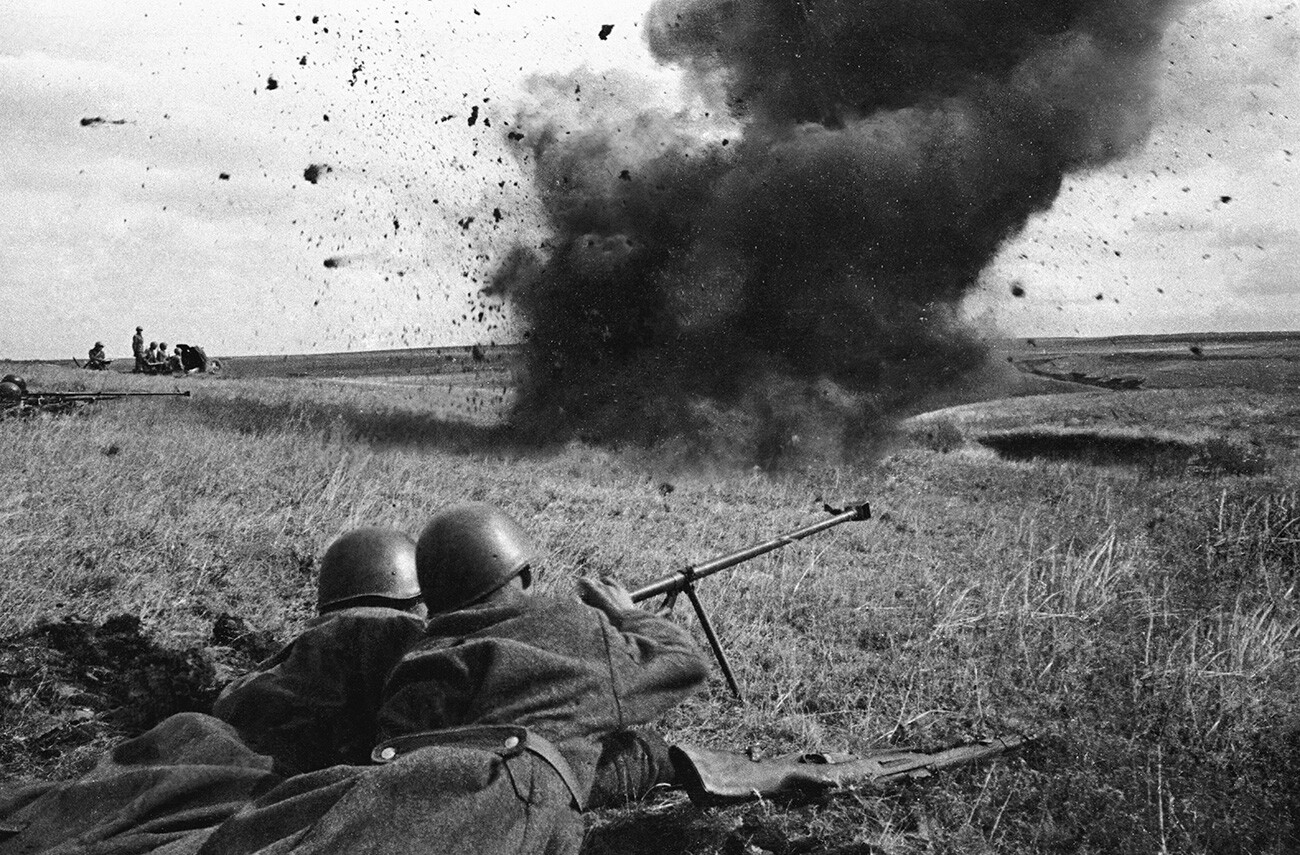
Anti-tank crews during the Battle of Kursk.
Natalya Bode/SputnikThings were a bit better for the German strike force operating on the southern face of the Kursk Bulge. “The first defensive positions of the enemy were scaled relatively easily, several settlements were taken,” Kurt Getzschman remembered, a soldier of the Panzergrenadier Division ‘Großdeutschland’. “Already on the second day, the resistance of the Russians grew. The Soviet anti-tank weapons especially caused a lot of problems.”
Suffering heavy losses, the German troops couldn’t break through the Soviet defenses after all or enter operational space. Then, instead of fighting their way to Kursk through the city of Oboyan, they went around through the village of Prokhorovka. To meet the advancing 2nd SS Tank Corps, 5th Guards Army and 5th Tank Army were dispatched. Initially, the Soviet command didn’t plan to make them engage in combat in the defensive phase of the battle.
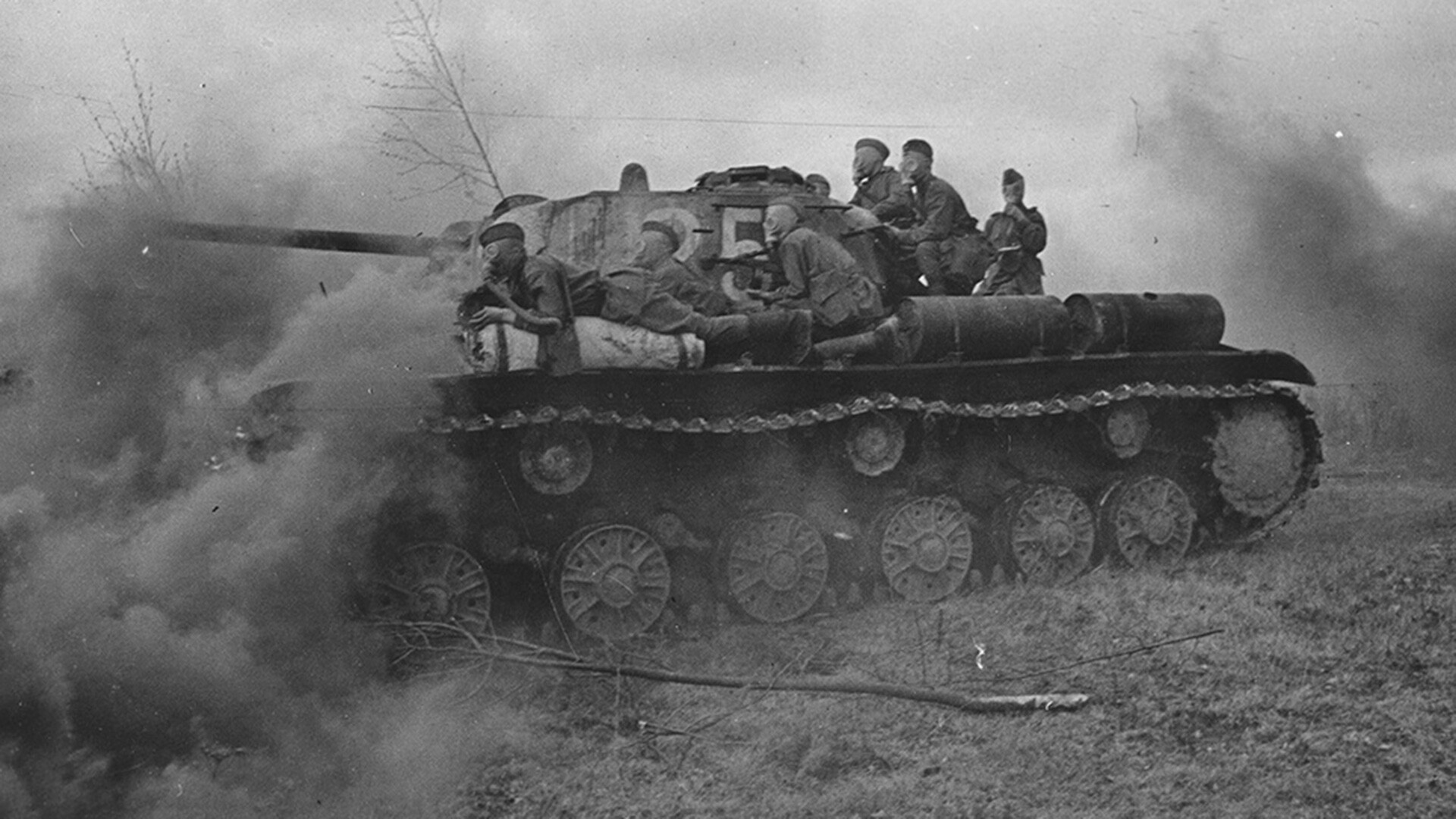
Soviet troops during combat.
Arkady Shaikhet/МАММ/МDF/russiainphoto.ruOn July 12, a massive tank battle ensued in the region of Prokhorovka, in which more than a thousand armored units took part from both sides. “You can’t describe it with words, everything around was in flames: machines, the earth, people…” pilot Yakov Scheinkman remembered, an eyewitness of the battle. “Flames everywhere. We landed in our Po-2 aircraft near the command post of the tank brigades that were engaged in combat, near the battle area; in short dashes, we reached the command post, delivered the secret package to them, and took off again over the ‘sea of fire’. After each flight, mechanics had to patch up dozens of holes in our planes. Prokhorovka was the scariest thing I’ve seen in the war.”
By the end of the day, four hundred tanks were left burning on the battlefield, but neither of the sides gained an advantage.
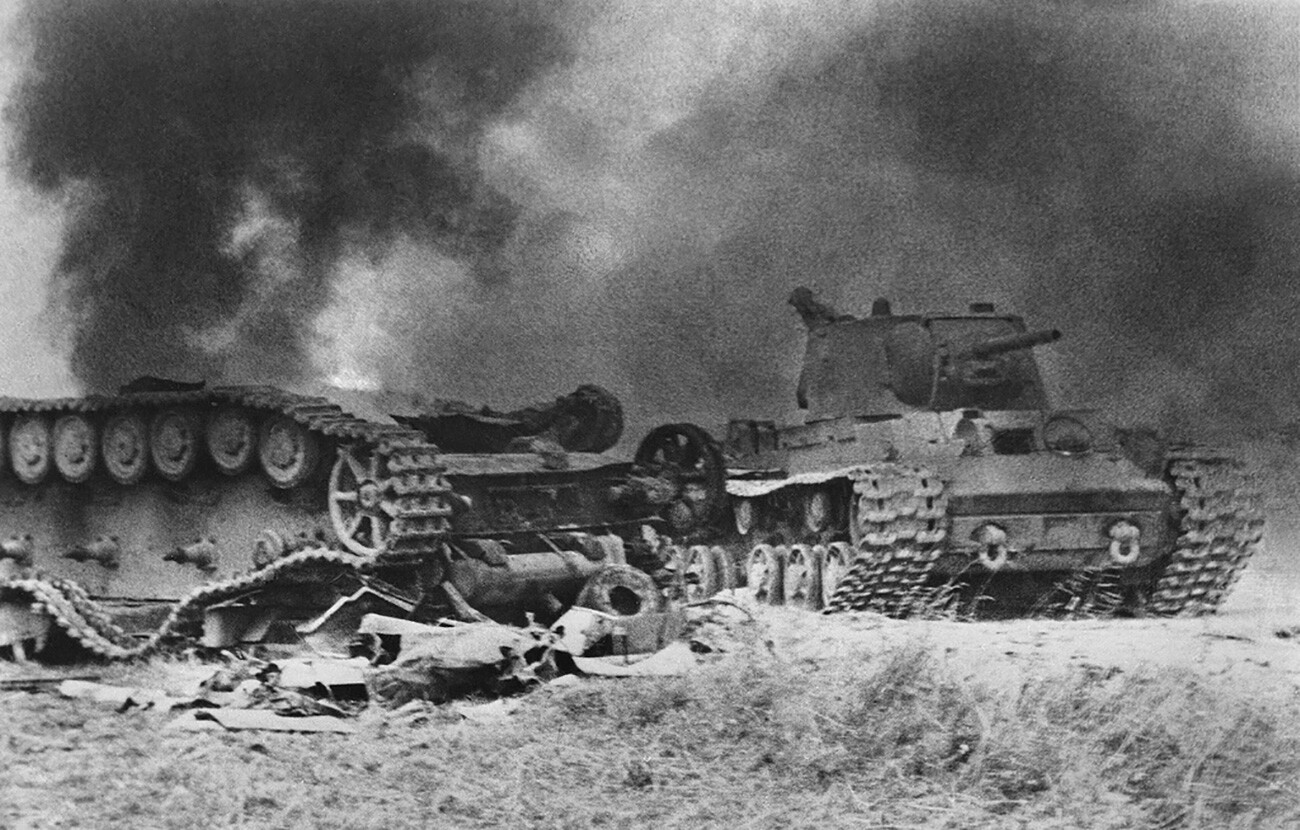
On the ‘Kursk Bulge’.
Ivan Shagin/МАММ/МDF/russiainphoto.ruNonetheless, by that time it was evident that ‘Operation Citadel’ had failed. On July 12, the armies of the Western and Bryansk fronts transitioned to offensive, on July 15, the armies of the Central front followed suit.
In the course of the general offensive that followed, Soviet troops advanced 150 kilometers to the west. On August 5, they liberated the cities of Orel and Belgorod, in honor of which Moscow saw fireworks for the first time. On August 23, the Red Army entered Kharkov. With this, the large-scale battle was finished.
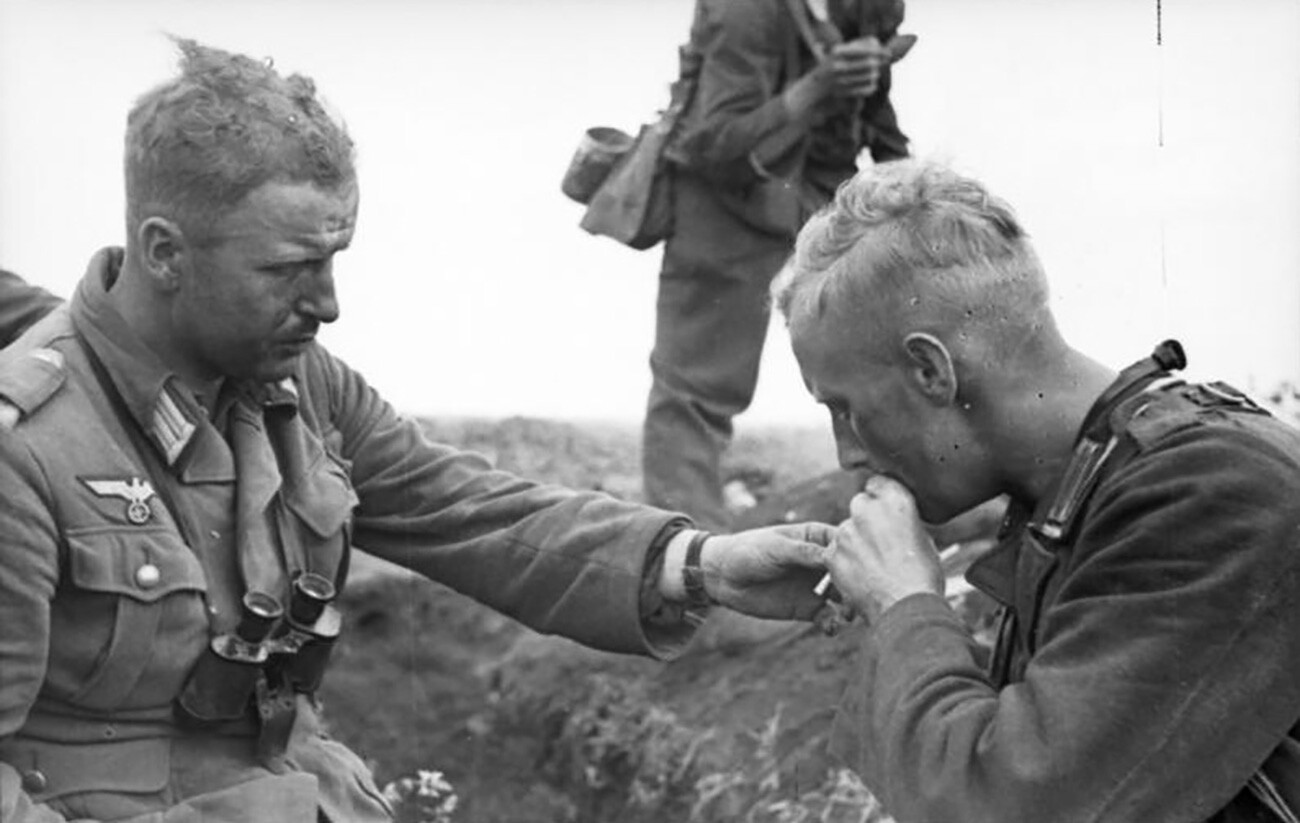
German soldiers near Prokhorovka.
BundesarchivIn the course of a month and a half of battle the Soviet troops’ losses amounted to more than 800,000 men, 255,000 of which were killed or went missing in action. The Germans lost from 400,000 to 500,000 men.
“The armored forces, replenished with such difficulty, were incapacitated for a long time due to large losses of men and vehicles,” General Heinz Guderian wrote, “Their timely restoration for a defensive action on the Eastern Front, as well as for organizing defenses in the West in case of a troop landing threatened by the Allies the following spring, was now under question. Naturally, the Russians rushed to capitalize on their success. There were no calm days on the Eastern Front anymore.”
The bloodless enemy was forced to forget about conducting any large-scale offensive operations and to transition to defense along the entire length of the Soviet-German front. At the same time, the Red Army acquired a firm strategic initiative and didn't let it go until the very end of World War II.
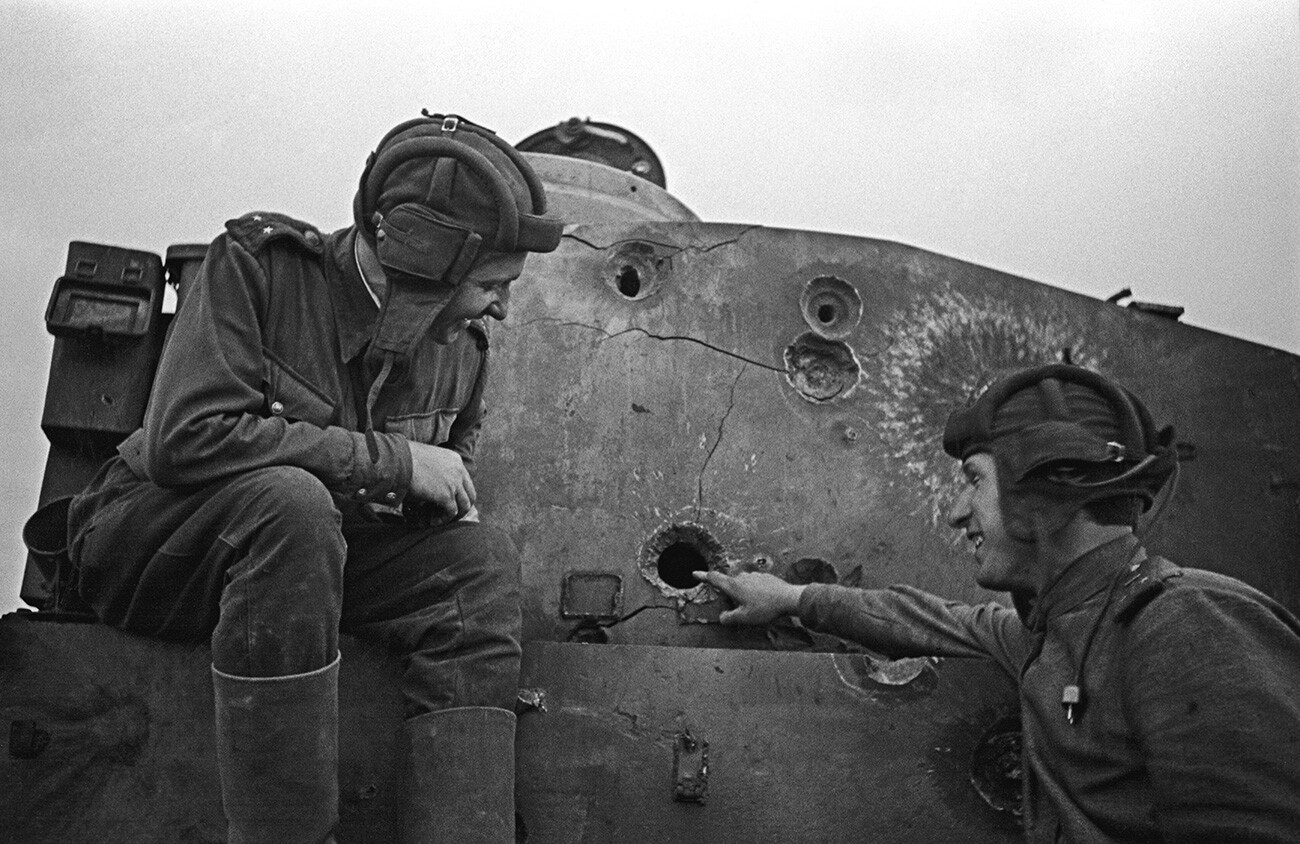
Two Soviet tankmen sitting on a disabled Tiger tank.
Natalya Bode/SputnikIf using any of Russia Beyond's content, partly or in full, always provide an active hyperlink to the original material.
Subscribe
to our newsletter!
Get the week's best stories straight to your inbox